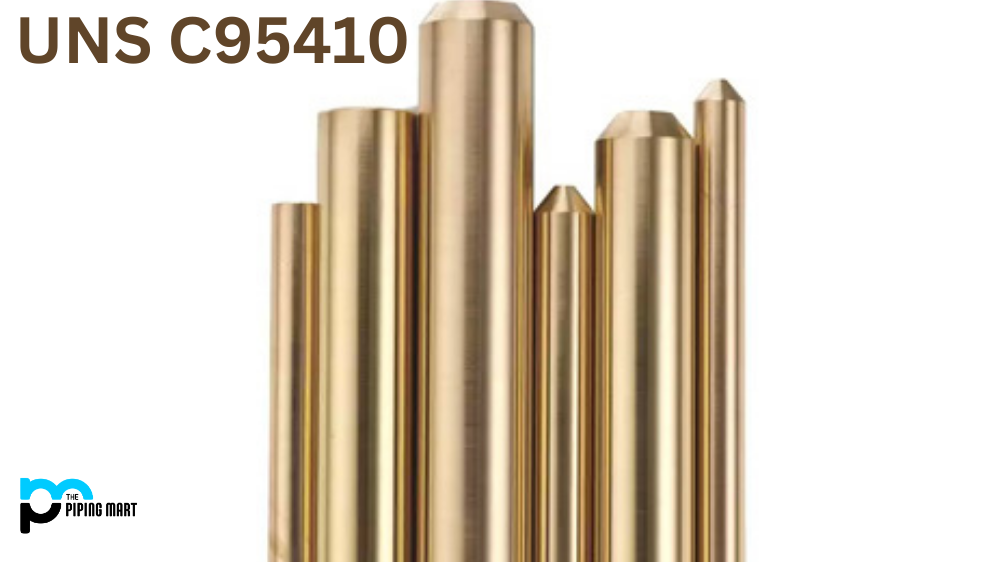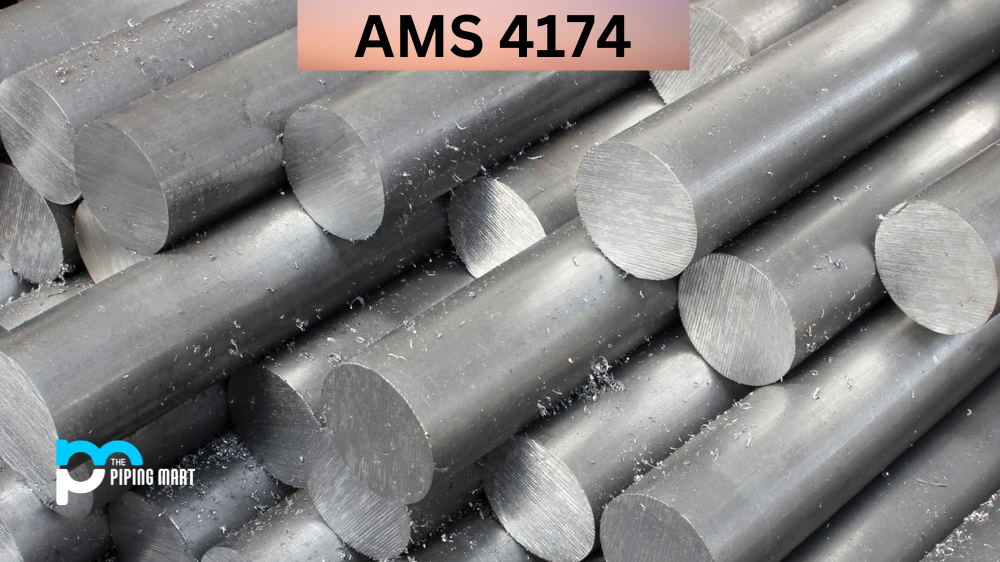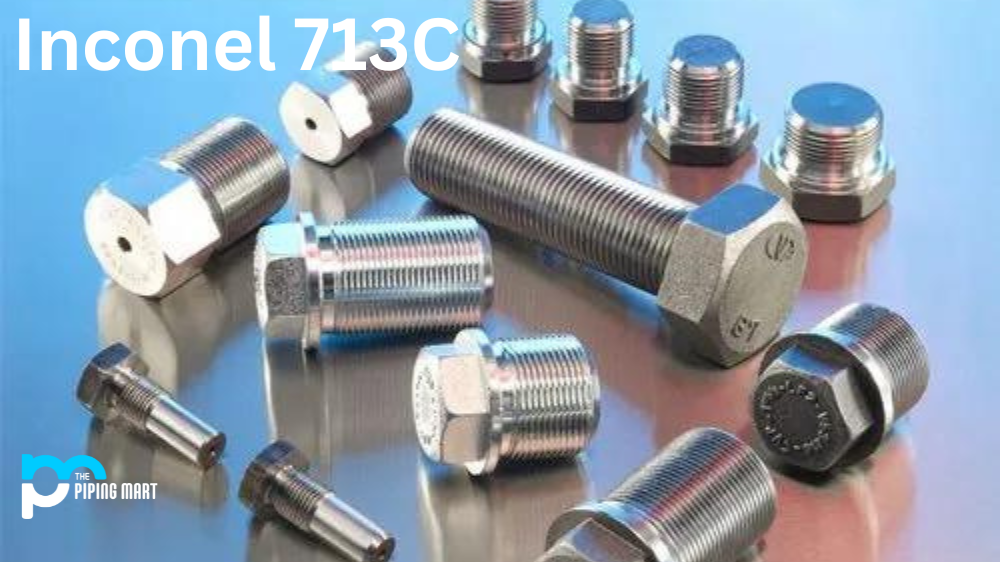UNS C95410 is an aluminium bronze alloy with exceptional corrosion resistance and mechanical and physical properties. The alloy primarily comprises copper and aluminium, a popular material in engineering and manufacturing. This article will delve into the intricacies of UNS C95410, including its composition, mechanical and physical properties, uses, corrosion resistance, heat treatment, machining, and welding.
UNS C95410 Composition
UNS C95410 is a copper-based alloy that contains approximately 82% copper, 10% aluminium, 5% nickel, and 3% iron. The alloy also has traces of manganese, silicon, and tin. Combining these elements provides exceptional strength, ductility, and wear resistance to the alloy. UNS C95410 also has excellent thermal conductivity and resistance to corrosion, making it ideal for use in harsh environments.
| Element | Content (%) |
|---|---|
| Cu | 85 |
| Fe | 4 |
| Al | 11 |
| Ni | 2 |
UNS C95410 Mechanical Properties
UNS C95410 has impressive mechanical properties, including high tensile strength, yield strength, and elongation. The tensile strength of this alloy is around 120 ksi, while the yield strength is about 60 ksi. The extension of the alloy is typically about 20%. These mechanical properties make UNS C95410 a popular choice in manufacturing gears, valves, pumps, bearings, and bushings.
| Properties | Metric | Imperial |
|---|---|---|
| Hardness, Brinell (as cast; 3000 kg) | 170 | 170 |
| Hardness, Brinell (TQ50 temper; 3000 kg) | 195 | 195 |
| Hardness, Rockwell B (as cast) | 83 | 83 |
| Hardness, Rockwell B (TQ50 temper) | 94 | 94 |
| Tensile strength, ultimate (as cast) | 515 MPa | 74700 psi |
| Tensile strength, ultimate (TQ50 temper) | 620 MPa | 89900 psi |
| Tensile strength, yield (as cast) | 205MPa | 29700 psi |
| Tensile strength, yield (TQ50 temper) | 310 MPa | 45000 psi |
| Elongation at break (TQ50 temper, in 50 mm) | 8.00% | 8.00% |
| Elongation at break (as cast, in 50 mm) | 12.00% | 12.00% |
| Reduction of area (TQ50 temper) | 6.00% | 6.00% |
| Reduction of area (as cast) | 12.00% | 12.00% |
| Creep strength (for 10E-5%/h, at 425°C) | 20.0 MPa | 2900 psi |
| Creep strength (for 10E-5%/h, at 370°C) | 30.0 MPa | 4350 psi |
| Creep strength (for 10E-5%/h, at 315°C) | 51.0 MPa | 7400 psi |
| Creep strength (for 10E-5%/h, at 230°C) | 115 MPa | 16700 psi |
| Modulus of elasticity | 110 GPa | 16000 ksi |
| Compressive strength (as cast) | 940 MPa | 136000 psi |
| Compressive strength (TQ50 temper) | 1070 MPa | 155000 psi |
| Poisson’s ratio | 0.316 | 0.316 |
| Charpy impact (keyhole, TQ50 temper) | 9.00 J | 6.64 ft-lb |
| Charpy impact (keyhole, as cast) | 15.0 J | 11.1 ft-lb |
| Izod impact (TQ50 temper) | 15.0 J | 11.1 ft-lb |
| Fatigue strength (@# of cycles 1.00e+8, reverse bending) | 240 MPa | 34800 psi |
| Machinability (UNS C36000 (free-cutting brass) = 100%) | 60% | 60% |
| Shear modulus | 41 GPa | 5950 ksi |
UNS C95410 Physical Properties
UNS C95410 has high thermal conductivity, making it an excellent choice for heat exchangers and piping. The alloy has a thermal conductivity of around 36 W/mK and an electrical conductivity of 7-15% IACS. The alloy also has a 7.7 g/cm³ density, similar to copper’s. The alloy’s melting point is around 1030°C and has a coefficient of thermal expansion of 17.1 µm/m°C. The physical properties of UNS C95410 make it ideal for applications requiring high thermal and electrical conductivity.
| Properties | Metric | Imperial |
|---|---|---|
| Density | 7.45 g/cm3 | 0.269 lb/in3 |
| Melting point | 1025 – 1040°C | 1877 – 1900°F |
UNS C95410 Thermal Properties
| Properties | Metric | Imperial |
|---|---|---|
| CTE, linear(@ 20.0 – 300°C/68.0°C – 572°F) | 16.2 μm/m°C | 9.00 μin/in°F |
| Specific heat capacity | 0.420 J/g°C | 0.100 BTU/lb°F |
| Thermal conductivity (@ 20.0°C/68.0°F) | 59.0 W/m-K | 409 BTU-in/hr-ft< sup> °F |
| Solidus | 1025°C | 1877°F |
| Liquidus | 1040°C | 1900°F |
UNS C95410 Uses
UNS C95410 is a versatile alloy that finds use in various applications. The alloy’s exceptional strength, ductility, and wear resistance make it ideal for manufacturing pumps, gears, bushings, and bearings. The high thermal conductivity of the alloy makes it an excellent choice for heat exchangers and piping. UNS C95410 is also helpful in marine and offshore applications due to its excellent corrosion resistance to seawater and salt spray. The alloy is also frequently used in the aerospace, construction, and automotive industries.
UNS C95410 Corrosion Resistance
UNS C95410 has excellent corrosion resistance to seawater, brine, and other salts. The alloy forms a protective oxide layer when it comes in contact with seawater or salt spray, which prevents further corrosion. This property makes UNS C95410 an excellent choice for marine and offshore applications. The alloy is also resistant to biofouling and microbial decomposition.
UNS C95410 Heat Treatment
UNS C95410 is a heat-treatable alloy and can be strengthened by precipitation hardening. The alloy can be annealed after manufacturing to relieve internal stresses. The alloy should undergo a heat treatment process called precipitation hardening to achieve maximum strength. The process involves heating the alloy to temperatures ranging from 760 to 870°C for several hours, followed by quenching in water. The alloy is then aged at a lower temperature for several hours to allow the formation of precipitates. This process improves the alloy’s mechanical properties, making it harder and more robust.
UNS C95410 Machining
UNS C95410 is easy to machine when proper techniques are used. The alloy has excellent machinability due to its high copper content. The alloy can be machined using both conventional and CNC machines. The recommended cutting speed for UNS C95410 is around 50-100 feet per minute, and the feed rate is typically 0.005-0.007 inches per revolution. Carbide tools are recommended since they can withstand the high temperature generated during machining.
UNS C95410 Welding
UNS C95410 responds well to welding, brazing, and soldering. The alloy can be welded using various methods such as TIG, MIG, and plasma arc welding. Filler metals such as AWS A5.7 ERCUSI-A are recommended when TIG welding. The alloy can also be brazed using silver-based brazing alloys. Before welding or brazing, the alloy should be cleaned thoroughly to remove any oil, grease, or other contaminants.
Conclusion
UNS C95410 is a versatile and popular copper-based alloy with excellent mechanical and physical properties. The alloy is heat-treatable, has high thermal and electrical conductivity, and exceptional corrosion resistance making it an ideal material for various applications. Understanding the composition, mechanical and physical properties, uses, corrosion resistance, heat treatment, machining, and welding techniques of UNS C95410 can help you utilize this alloy’s full potential. Its many desirable properties make it an excellent choice for applications that require strength, wear resistance, thermal and electrical conductivity, and corrosion resistance.

A passionate metal industry expert and blogger. With over 5 years of experience in the field, Palak brings a wealth of knowledge and insight to her writing. Whether discussing the latest trends in the metal industry or sharing tips, she is dedicated to helping others succeed in the metal industry.




